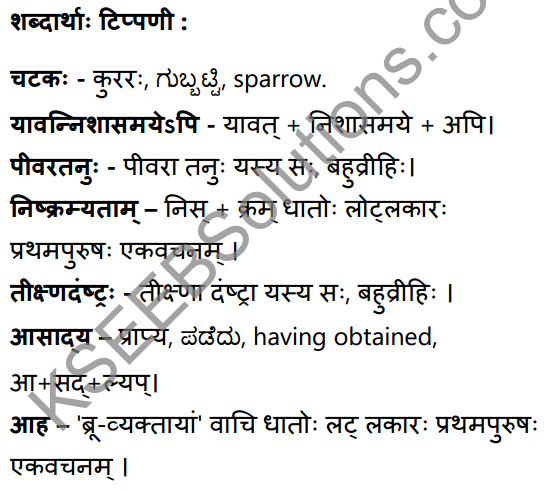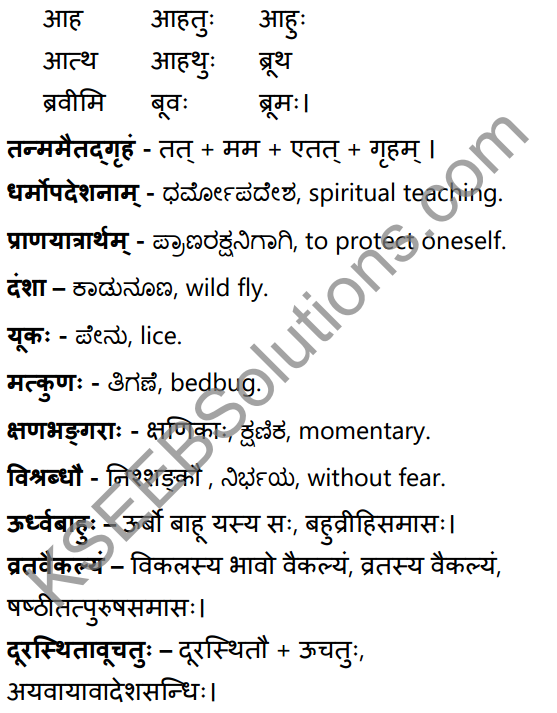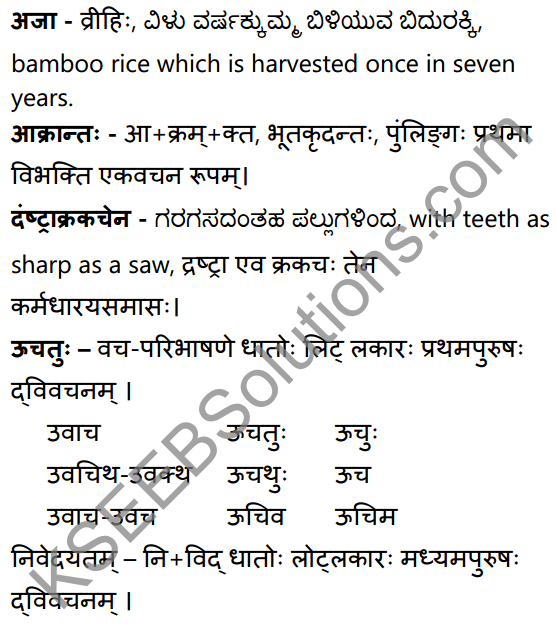Students can Download Sanskrit Shevadhi Lesson 3 विवादः विनाशाय Questions and Answers, Notes Pdf, Summary, 1st PUC Sanskrit Textbook Answers, helps you to revise complete Karnataka State Board Syllabus and score more marks in your examinations.
Karnataka 1st PUC Sanskrit Textbook Answers Shevadhi Chapter 3 विवादः विनाशाय
विवादः विनाशाय Questions and Answers, Notes, Summary
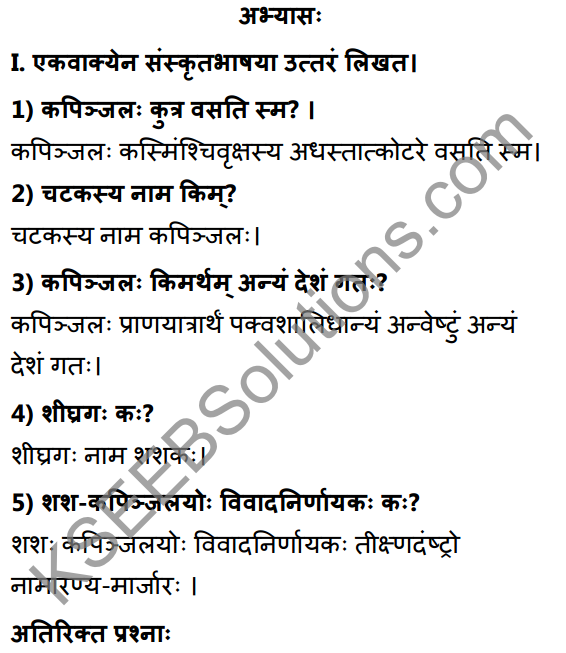
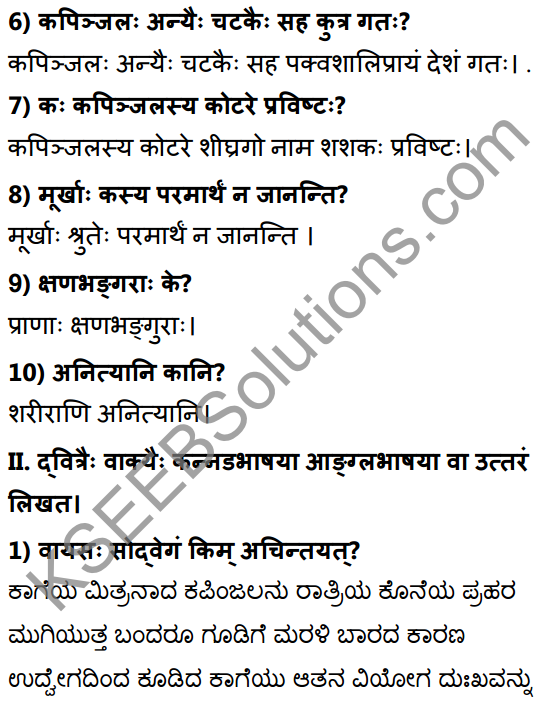
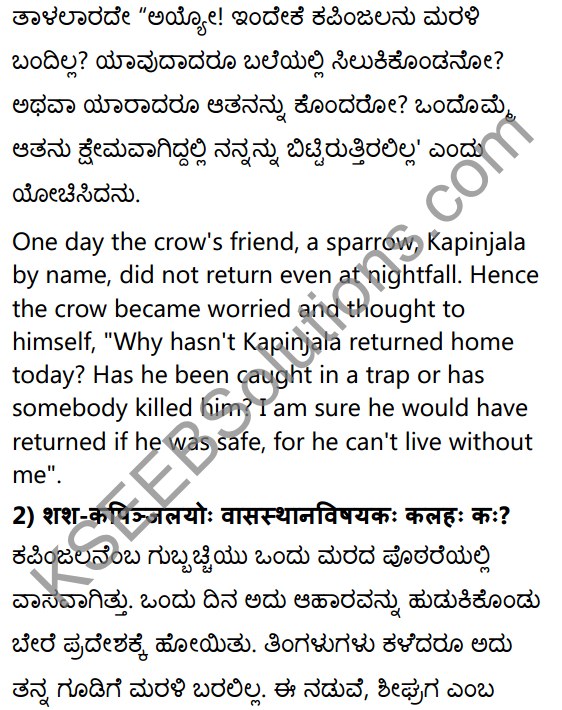
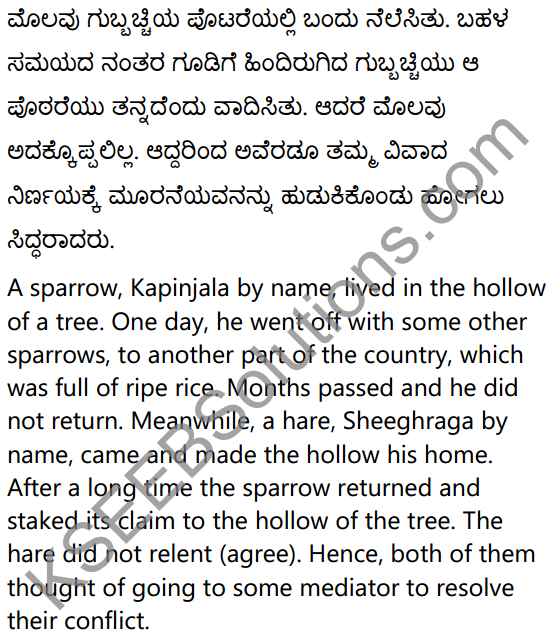
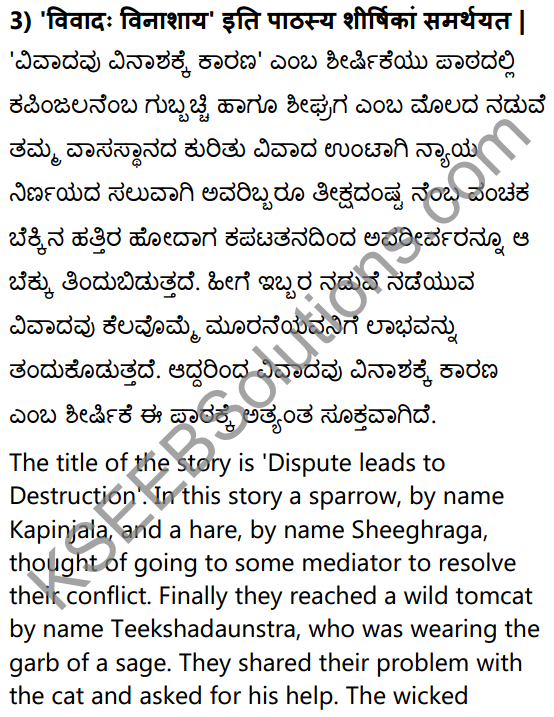
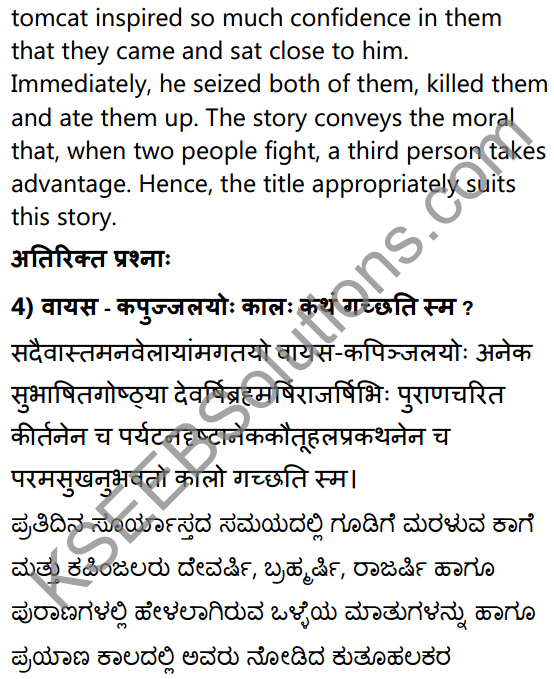
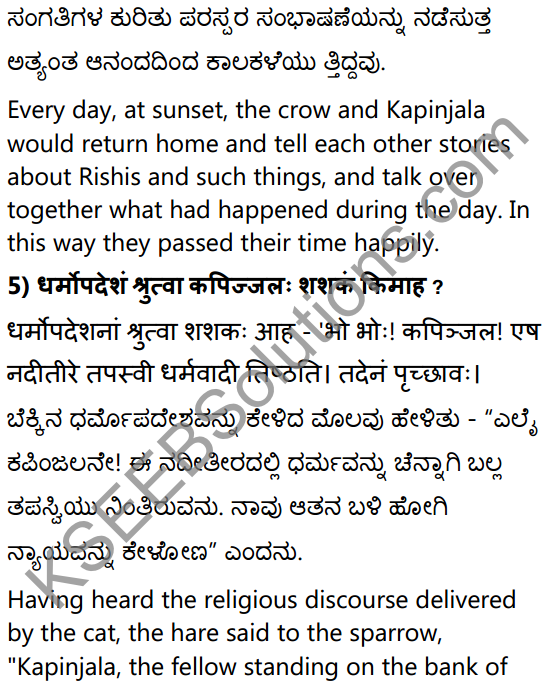
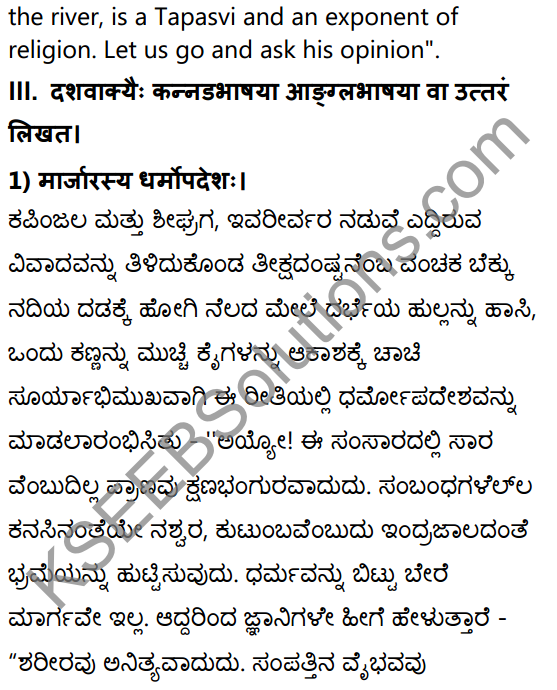
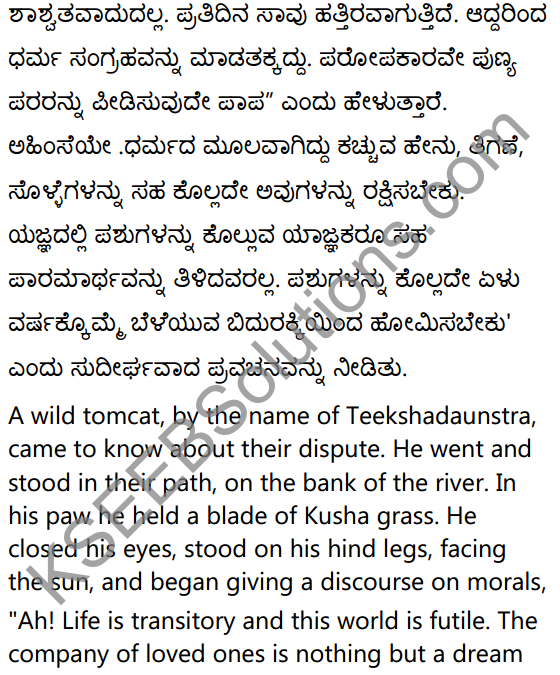

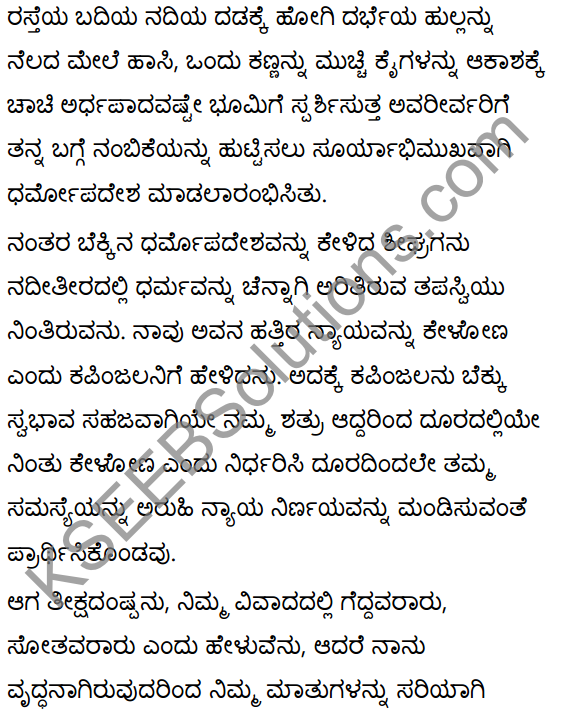
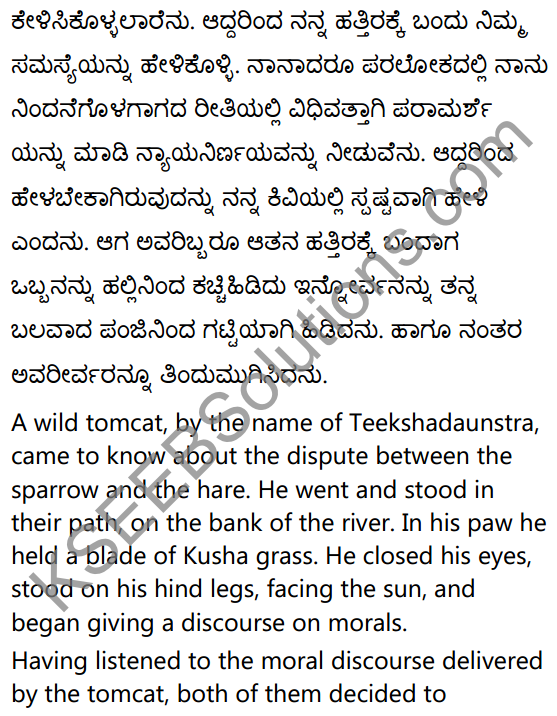
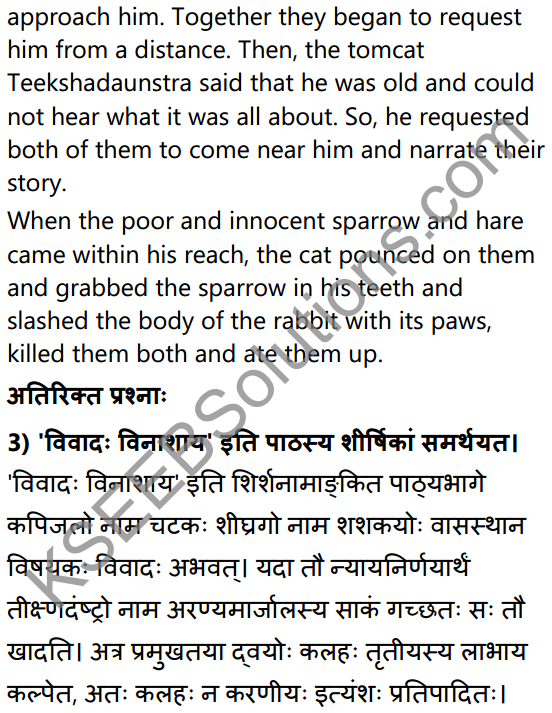
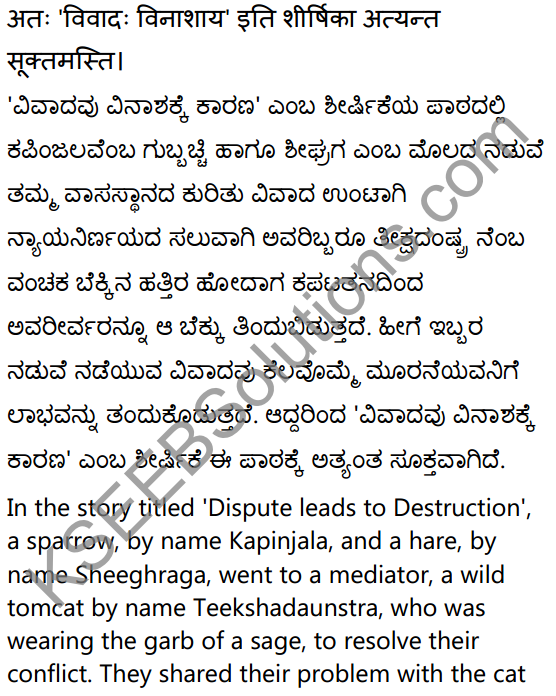
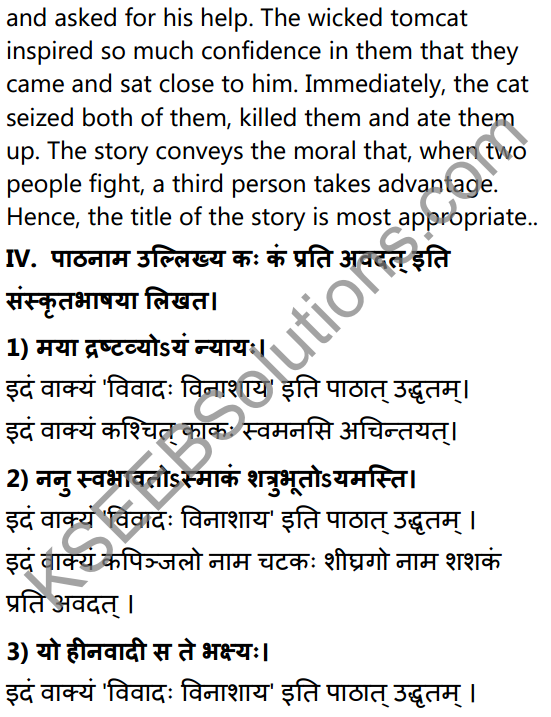
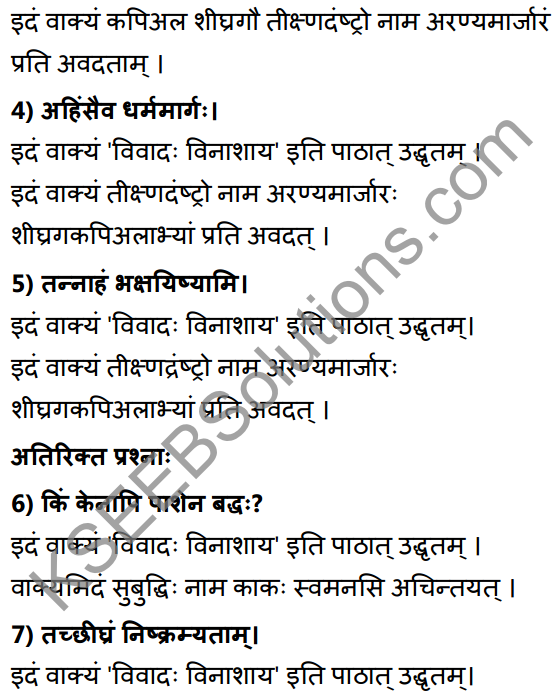
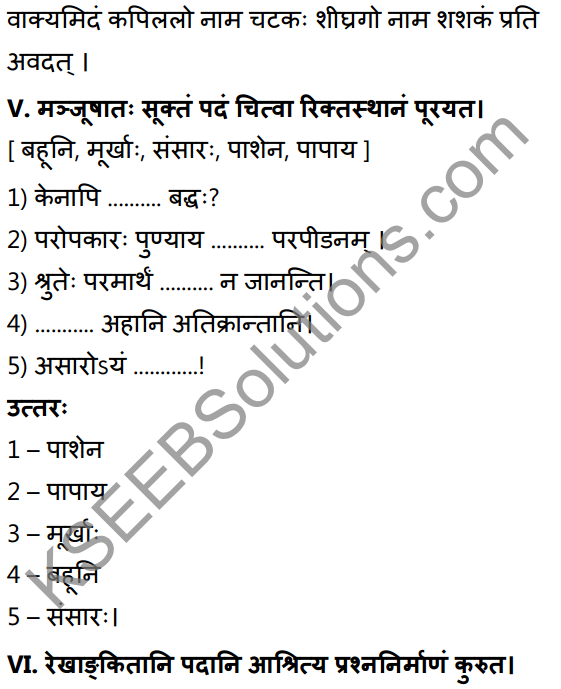

विवादः विनाशाय Summary in Kannada and English
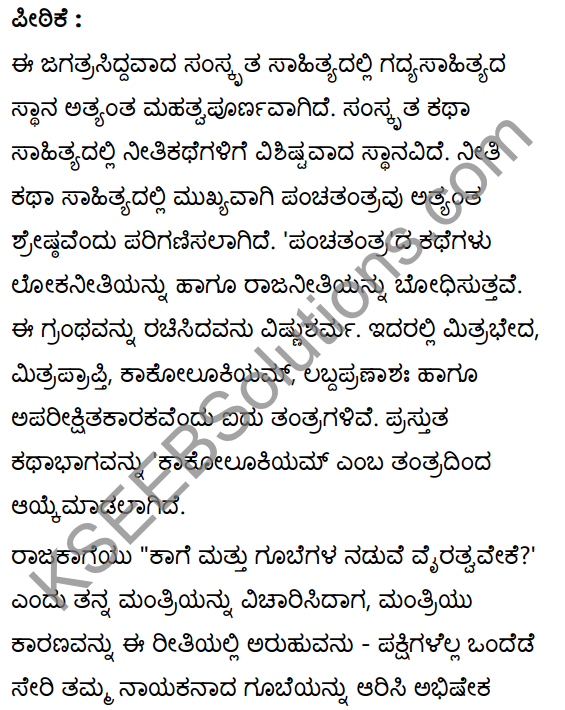

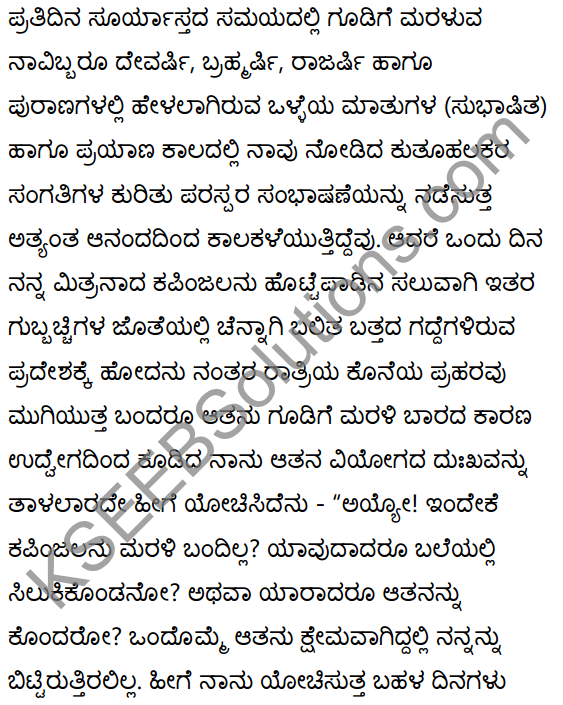
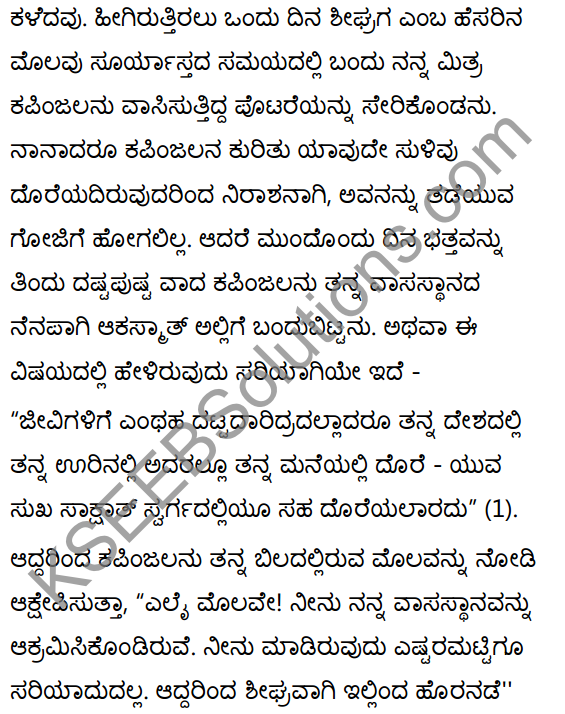
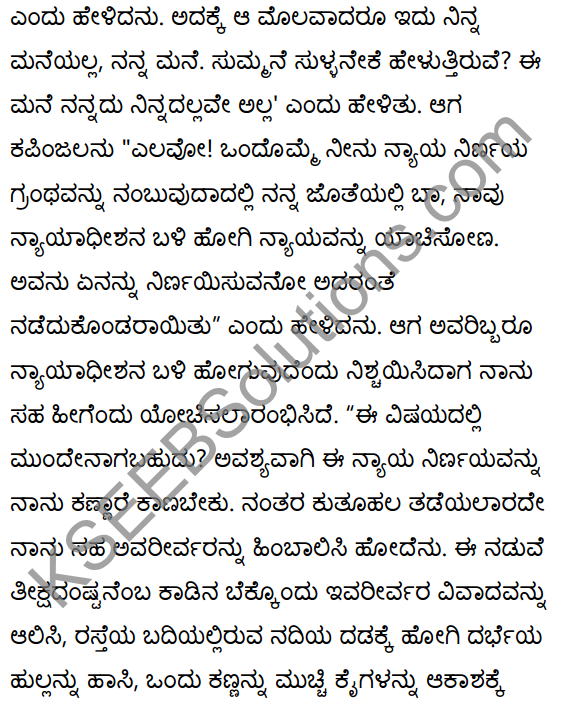
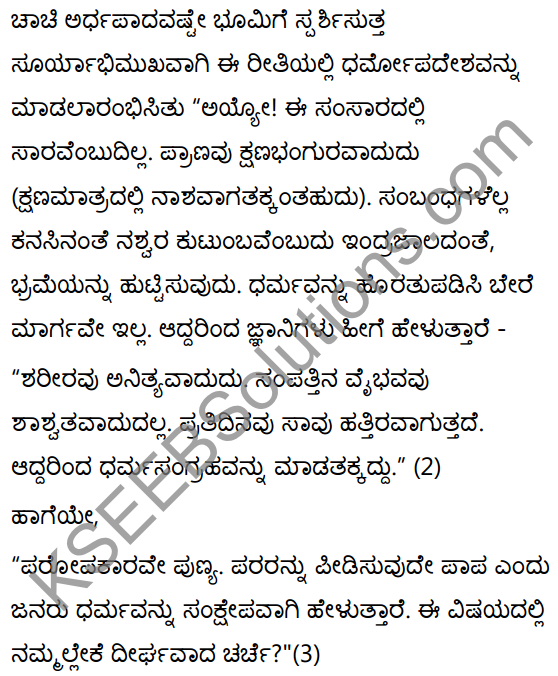
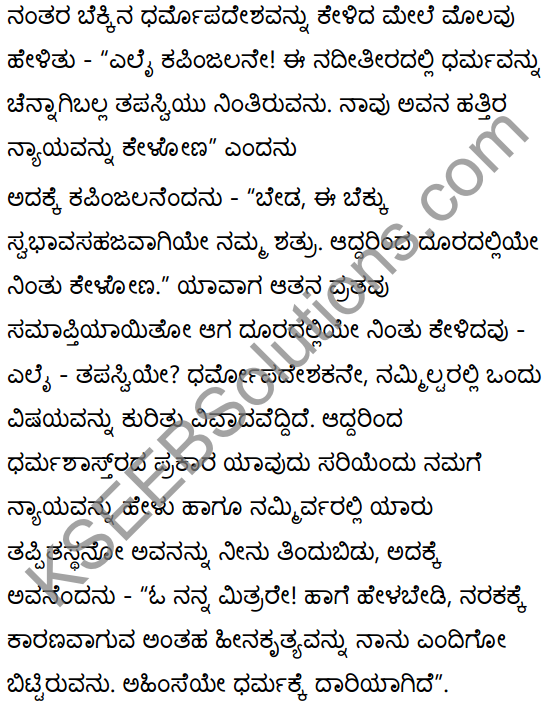
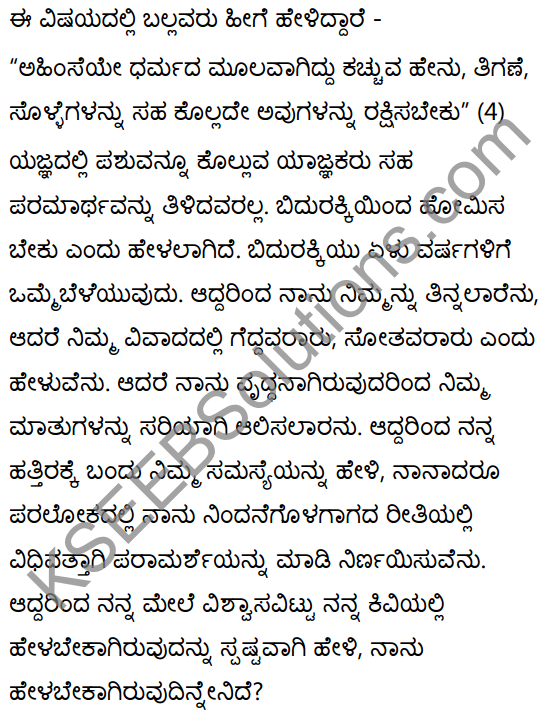
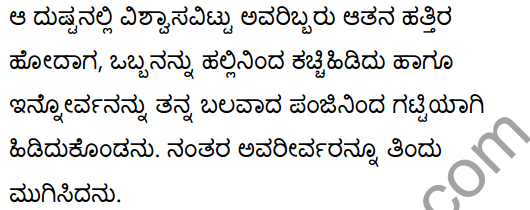
विवादः विनाशाय Summary in English
Introduction:
Prose literature has a unique place in Sanskrit literature. ‘Fables’ form an important part of prose fiction. Among the fables ‘Panchatantra’ is very famous. Panchatantra stories provide us an insight into life, which in turn teaches us the necessary skills in politics and worldly life.
Vishnusharma is the author of ‘Panchatantra’. Panchatantra is so called because it is divided into, five tantras or sections – ‘Mitrabedha’ (Conflict among friends), ‘Mitra-labha’ or ‘Mitrasamprapti’ (Winning of friends), ‘Kakolukiyam’ (enmity between crows and owls), ‘Labdhapranasham’ (loss of what was gained), and ‘Aparikshitakarakam’ (action without due consideration). The prescribed extract is taken from ‘Kakolukiyam’.
When the king of the crows asks the minister as to why there is enmity between crows and owls, the minister says Once upon a time all the birds had a meeting and having elected the owl as their king they decided to coronate him. Suddenly a crow appeared from nowhere and questioned them why they had chosen an owl as their king. The crow first narrated the story of the elephant king Chaturadanta and then this story.
Summary:
Once upon a time, I was living in a certain tree. In the hollow, at the foot of the tree, lived a sparrow, by the name of Kapinjala. In course of time, we became Every day, at sunset, we would return home and tell each other stories about Rishis and such things, and talk over together what had happened during the day. In this way, we passed our time very contentedly.
One day, Kapinjala went off, with some other sparrows, to another part of the country, which was full of ripe rice. When he did not return at nightfall, I became very worried and thought to myself, “Oh dear, why hasn’t Kapinjala returned home today? Has he been caught in a trap or has somebody killed him? I am sure he would have returned if he was safe, for he can’t live without me!”
And so, I spent several days worrying.
One day, at nightfall, a hare, by the name of Sheeghraga, came and took over the hole in the tree. As I had given up all hope of ever seeing Kapinjala again, I did not object in any way to his occupying the place.
Meanwhile, Kapinjala, who had become fat from eating the ripe rice, suddenly remembered his former home and came back.
“No creature experiences that happiness which it enjoys, though poor, in its country, its town and its own house. (1)
When he found the hare living in his house, he objected very strongly and said to him, “Hare! You have taken my home! That’s very unfair of you! Leave immediately!”
“Oh, but this place is mine now,” said the hare, “for they say:
‘A well, a pond, a temple and a tree,
Once given up by their owners,
Cannot be reclaimed
“Now, this.precept, enjoined by the sages for human beings, is also applicable to birds and animals. So this place is mine and not yours.”
“Hare!” said Kapinjala. “If you are quoting the shastras, then let us approach someone who is well versed in them and we’ll let him decide who is to have the place.”
Both agreed to this suggestion and set off together to have their dispute decided by a Shastri.
Out of curiosity, continued the crow, ‘I followed them’, thinking to myself, “I would very much like to hear the decision in this case!”
Now, a wild tomcat, by the name of Teekshadaunstra, came to know about their dispute. He went and stood in their path, on the bank of the river. In his paw he held a blade of Kusha grass. He closed his eyes, stood on his hind legs, facing the sun, and began giving a discourse on morals.
“Ah! Life is transitory and this world is futile. The company of loved ones is nothing but a dream and the presence of the family like the trick of a conjurer.
“The bodies are not everlasting (i.e., are perishable in a moment); prosperity is not at all permanent; and death is always close at hand; therefore a store of religious merit should be made.(2).
“The principle of Dharma is briefly explained to you, O people; what have you to do with a detailed description? Doing good to others leads to merit; giving trouble to others, to sin. (3)
When the hare heard this religious discourse, he said to the sparrow, “Kapinjala! This fellow, sitting on the bank of the river, is a Tapasvi and an exponent of religion. Let us go and ask his opinion.”
“All right,” said Kapinjala, “but he is a wild tomcat and our natural enemy, so we should talk to him from a very long way off.”
And so, standing at a distance, they both said to him. “Tapasvi! There is a dispute between us. Give us your opinion, in accordance with the shastras, and whichever of us is in the wrong, you can eat up.”
“My friends,” said the tomcat, “please don’t talk like that! I have given up that violent way of life which leads directly to hell. The sages have declared non-violence to be the essence of true religion.”
“Since Dharma is said by the wise to be based on Ahimsa (abstaining from injuring or destroying life) one should protect even a louse or a bug.” (4)
It’s wrong to kill even lice, bugs and mosquitoes, so I shall certainly not kill you. However, I will decide who wins and who loses in this dispute. But, I am old and I can’t hear what it’s all about from so far away. So, come nearer and present your case, so that I can decide in such a way, that I am not held blameworthy in the next world.
“So, have confidence in me and speak the facts clearly in my ears. What more is there for me to say?”
And so, this wicked tomcat inspired so much confidence in the sparrow and the hare, that they came and sat close to him. Immediately, he seized one of them in his teeth and the other in his claws, killed them both and ate them up.
